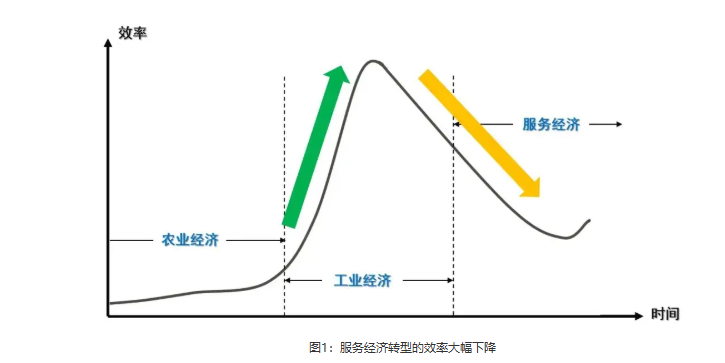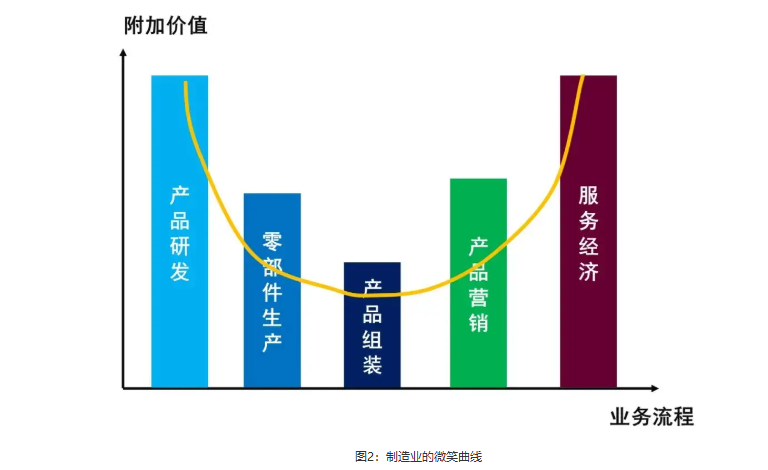In the 1950s, China experienced a transition from an agricultural economy to an industrial economy. Currently, we are undergoing a transition from an industrial economy to a service economy, and many people are not aware that this is a major transformation of the socio-economic structure, so many enterprises feel very painful.
The transition from agriculture to industry
Throughout the development history of developed countries, their economic structure has undergone multiple transformations, from agricultural economy to industrial economy, service economy, and experience economy.
Agricultural economy refers to planting crops, trees, and raising livestock on land, excavating mineral deposits underground, and making simple tools to improve agricultural efficiency. The agricultural economy produces goods that meet people's basic survival needs. China is one of the birthplaces of world agriculture, which began in the Neolithic Age about 10000 years ago and has gone through a very long development process.
With the emergence of steam engines and electricity, the industrial economy entered the historical stage. People used machines in factories to manufacture goods in large quantities, and farmers began to enter factories and transform into industrial workers. This was a large-scale transformation in human history.
Although during the Westernization Movement from the end of the 19th century to the beginning of the 20th century, China began to try to establish some civilian factories, the real process of industrialization in China began with the five-year plan from 1953 to 1957. After the completion of the five-year plan, China's industrial output value exceeded the agricultural output value, initially laying the foundation for China's industrialization.
After decades of reform and opening up, China's industrial economy has developed at an unprecedented speed. In 2010, the added value of China's manufacturing industry surpassed that of the United States to become a major manufacturing country. Currently, China has 41 industrial categories, 207 industrial subcategories, and 666 industrial subcategories, forming an independent and complete modern industrial system. It is the country in the world with all industrial categories in the United Nations Industrial Classification.
The transformation from manufacturing to service
From the perspective of international experience, the inflection point of the transformation from manufacturing to service is concentrated in the year when the per capita GDP reached 8000 to 9000 dollars. China's per capita income exceeded 8000 dollars in 2010. The proportion of people's spending on manufacturing products reached its peak in 2011, and the per capita income exceeded 9000 dollars in 2012.
In 2012, China bid farewell to the peak of industrialization, with a continuous decline in industrial product development and rapid growth in service spending. The growth rate of industrial added value and employment share in the service industry exceeded that of the manufacturing industry, with technology intensive industries showing outstanding performance. This reflects the changing trend of the consumer sector from manufacturing to services.
Since then, China has been in the process of transforming its economic structure from manufacturing to service. Consumption upgrading is the driving force behind the transformation from manufacturing to service economy. Driven by it, changes in consumer expenditure structure, industrial structure, population mobility, and urban form have followed suit.
The transformation from manufacturing to services has brought pressure to eliminate traditional concepts and traditional economies, as well as a huge impact on the past economy and policies. The entire socio-economic system is in a relatively fragile stage, and many enterprises are facing enormous challenges.
Taking the construction machinery industry as an example, before 2012 it was an incremental market, but after 2012 it entered a stock market, and the industry experienced years of painful transformation. The reason for this is that people lack understanding of the characteristics of the service economy, and the traditional concepts formed by thousands of years of agricultural economy are not conducive to the transformation from manufacturing to service.
Mencius said: Those who work hard govern people, and those who work hard govern people. He believed that mental laborers rule people, are served by others, and are of the highest rank; Manual laborers are ruled by others and are the lower class who serve others. For thousands of years, prejudice against service has been deeply ingrained in the public psyche.
In ancient times, the basic occupations of the service industry were collectively referred to as the "lower nine classes". Service providers were called servants, and professions that relied on serving others to earn rewards were looked down upon, with the word "lower" used as a derogatory term. However, the term "nine classes" indicated a wide variety of types, and outdated traditional concepts were one of the main reasons hindering the transformation from manufacturing to service.
The proportion of China's service industry has exceeded 50% for ten consecutive years, becoming a major industry. However, many people still underestimate services in their hearts. Tangible products are still the center of commercial activities and are considered more valuable; And intangible services are seen as accessories of products, with their value severely underestimated.
The key to improving service efficiency
The transition from agriculture to industry has greatly improved production efficiency through large-scale manufacturing, making goods more cost-effective.
However, another challenge that affects the transition from manufacturing to service is efficiency. Fragmentation leads to a significant decrease in service efficiency compared to manufacturing (Figure 1), and companies still use the manufacturing economy mindset to engage in services with the idea of increasing scale, resulting in high costs and inability to meet customer needs.

According to the experience of developed countries, the service economy belongs to the high-end of profit, which is the smile curve of the manufacturing industry (Figure 2).

However, services are not valued in China, and some companies even bundle services for free when selling products, offering high-value services. Companies can only engage in trade, with low value and low customer loyalty. On the one hand, it is necessary to educate customers to change their service concept, and on the other hand, enterprises must solve the problem of inefficient services, as customers are not obligated to pay for the inefficiency of the enterprise.
The way to solve the problem of service efficiency lies in technological innovation, using knowledge bases, self-service, and AR remote support to improve service efficiency through networks and platforms.
If thinking is a wall, the objective world is on the other side of the wall, and only fixed thinking can block the footsteps of enterprises. The heights that thinking cannot reach cannot be reached by footsteps.

 Location:
Location: 2024-12-19
2024-12-19







 鲁公网安备37078102002311
鲁公网安备37078102002311